Simulating the effect of wind erosion on aeolian desertification process of Horqin sandy land and its significance on material cycle:a wind tunnel study
CaiXia Zhang,JinChang Li
1.Key Laboratory of Desert and Desertification, Northwest Institute of Eco-Environment and Resources, Chinese Academy of Sciences,Lanzhou,Gansu 730000,China
2.Shanxi Laboratory for Yellow River,Institute of Loess Plateau,Shanxi University,Taiyuan,Shanxi 030006,China
ABSTRACT Samples from the Horqin sandy land were exposed to a series of wind velocities, and sink particles were collected at the end of the diffusion section of a wind tunnel.Grain sizes of collected samples show great variation because of the granularity difference of the surface samples.The original samples show lower average content of SiO2 and higher average content of Al2O3,Fe2O3,MgO,CaO,Na2O,and K2O than collected samples.Compared with other dust source areas in China,the Horqin sandy land had higher content of Zr, Ba, SiO2,Al2O3 and K2O.Compared with the average upper continental crust (UCC) composition, surface samples were rich in the content of Y, Zr, Nb, Ba, La, Nd.Geochemistry characteristics of fine grain components of the Horqin sandy land differ from those from other dust source regions, because fine-grained particles in the Horqin sandy land were mostly derived from various local deposits formed in its unique depositional environments influenced by several tectonic activities.
Keywords:sink sand;wind erosion;aeolian process;Horqin sandy land
1 Introduction
Wind erosion is one of the main forces that trigger changes in the Earth's surface.Dust emission could lead to global changes by influencing precipitation processes and radiation (Chenet al., 2018b), fertilize seawater (Richonet al., 2018), reduce air quality(Chenet al., 2018a; Chenet al., 2018b), and increase in the incidence of lung-related diseases (Farajiet al.,2018;Schweitzeret al.,2018).
Saltation is the main mode of particle movement during wind erosion (Bagnold, 1941), and extensive research indicates that dust emission processes involve saltation dust and the dust emitted by the hitting and grinding functions of saltation dust (Avecillaet al.,2015;Avecillaet al.,2018;Liet al.,2020).Generally, dust emission depends on the relationship between aeolian erosivity and erodibility factors (Kurosakiet al., 2011).Aeolian erosivity is the ability of wind to cause erosion and is typically expressed by wind friction speed.The erodibility factor is characterized as the susceptibility of a surface to wind erosion,which is influenced by soil and land surface properties (Piet al., 2018), particle size composition (Donget al., 2003), gravel cover ratio (Donget al., 2002;Liu and Kimura, 2018), soil moisture content (Wanget al., 2014; Silvaet al., 2015; Liuet al., 2017), soil type (Liuet al.,2006;Pi and Sharratt,2017;Jiaet al.,2019), organic content (Iturriet al., 2017), salt content(O'Brien and McKenna,2012;Wanget al.,2012),soil microorganisms and the vegetation cover condition (Robichaudet al., 2017; Chenget al., 2018; Miriet al., 2018, 2019).Erodibility is obviously influenced by a magnitude of factors, whereas erosivity can be expressed by one variable.
At present, the desertification process caused by specific wind erosion has been poorly simulated(Donget al., 2010; Li and Sherman, 2015; Wanget al.,2018),and its effects on surface material composition have not been evaluated (Chenget al., 2016).In this study,sink sand was collected at the end of a wind tunnel and the aeolian effect on grain size sorting and geochemistry composition was assessed.The current study focuses on variations of particle size and geochemistry properties of surface sand samples along with aeolian transport.The significance of this subject in environmental assessment is likewise investigated.
2 Materials and methods
2.1 Study area
Horqin sandy land,with an area of 10.56×104km2,belongs to the agro-pastoral transition area in semi-arid Northern China and is one of the most severe desertification areas in China.Horqin sandy land belongs to a temperate continental monsoon climate,which is characterized by cold and dry winter,dry and windy spring, short and hot summer; 70% of yearly rainfall is concentrated in the latter season;In most areas, annual average temperature is 3-7 °C, with the lowest temperature occurring in January (from -12 °C to -17 °C), and the highest temperature occurring in July (20-24 °C).Annual precipitation and evaporation are 350-500 mm and 1,500-2,500 mm,respectively.
The altitude of this region drops from 650 m in the west to 180 m in the east.In the north,the geomorphology is dominated by the Great Xin'an Ling.Moreover, mounds, forests, and shrubs of Horqin sandy land are mainly distributed in these areas, along with the typical sand savanna of Northern China.In the middle area, the main landscape comprises alluvial plains controlled by the evolution of the West Liao River and its tributaries.In the south, loess hills are the most dominant were meadows and grassland vegetation is abundant (Figure 1).Samples were collected from different landscapes with a mean depth of 5 cm.The samples were crushed and dried in the lab, and put into the wind tunnel after the leaves and the roots were carefully removed by plastic tweezers.
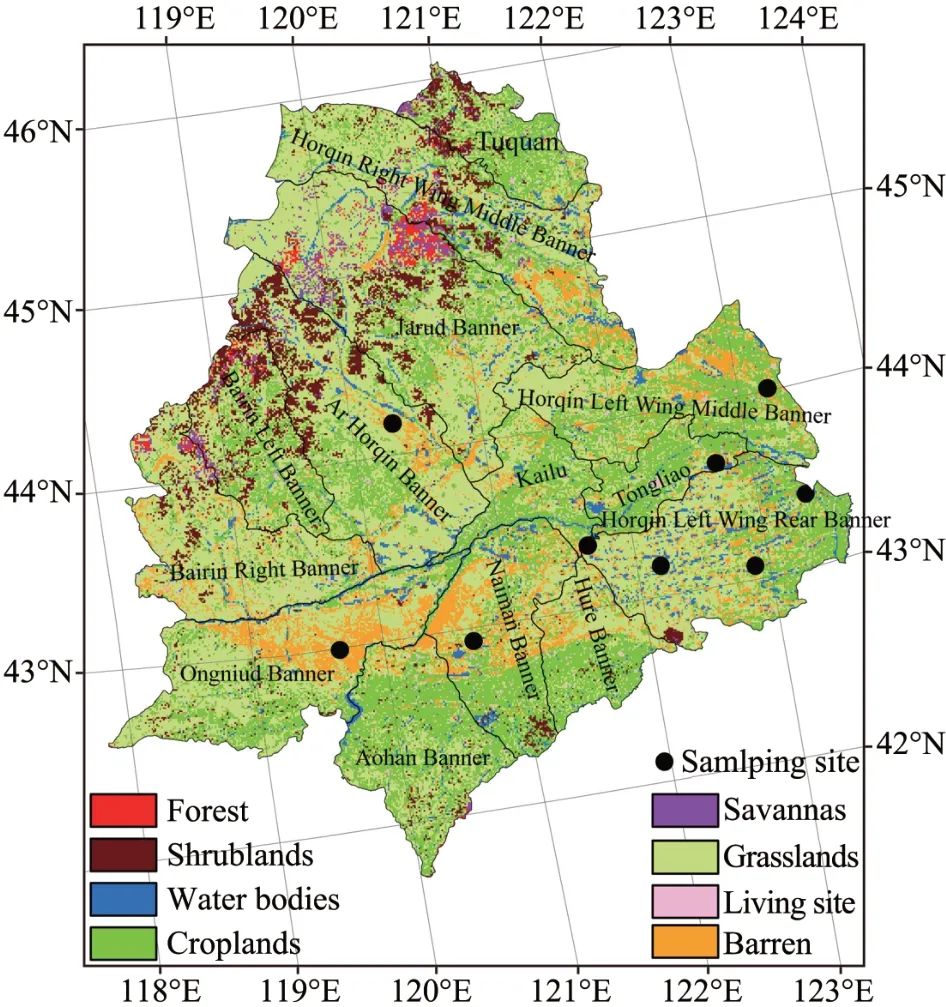
Figure 1 Land use patterns of the Horqin sandy land and sampling sites in the study area(The land use pattern is based on data provided by the Environment and Ecological Science Data Center for West China)
2.2 Experiment design
Wind tunnel experiments were carried out at the Key Laboratory of Desert and Desertification, Chinese Academy of Sciences.The wind tunnel was described in several studies(Donget al.,2010;Zhanget al., 2017a).Different surface samples in the working section of the wind tunnel were fixed, and three trays(with area of 1 m2) were put side by side in front of the horn month at the end of the diffusion section to avoid the fence effect of the sand hopper and simulate sand movement in a turbulent environment(Figure 2).Samples were exposed to increased wind velocities of 8 m/s to 22 m/s at an interval of 2 m/s to simulate the maximum dust emission status under natural conditions.Then, particles that accumulated in the trays were retrieved for further analysis.

Figure 2 The arrangement of the wind tunnel experiment
A fully automated sequential wavelength-dispersive X-ray fluorescence spectrometer (AXIOS Advanced, PANalytical B.V., Almelo, Netherlands) was used for elemental and oxide analysis.The materials were crushed to less than 75 μm using a multipurpose grinder, and dried in an oven at 105 °C for two hours.4 g of the dry powdered material is pressed into a 32-mm-diameter pellet using 30-ton pressure using the pressed powder pellet technique.Calibration curves were established using the Chinese reference materials of rock(GSR01-GSR15),soil(GSS01-GSS16)and water sediment (GSD01-GSD14).Standard samples were measured to control the quality of data and the results meet XRF test requirements.
Grain size of surface samples and collected samples were measured with a Malvern Mastersizer 3,000 laser grain size analyzer from 0.01 μm to 3,500 μm.Hydrogen Peroxide was used to remove organic matter while Hydrochloric acid was used to remove calcium conjugates.The pretreatment process was carried out at 120 °C.The results are presented as a volume percentage with 1% probability of error.
The mean grain size of each sample was calculated according to Folk and Ward (1957) using the following equation:

whereMzis mean grain size; andΦ16,Φ50, andΦ84are grain sizes when accumulation rates are 16%, 50%,and 84%, respectively.A large mean grain size indicates fine particles.
3 Resul ts
3.1 Grain size analysis
Horqin sandy land has fine- and medium-grained sand with particles measuring between 125 and 500 μm(Figure 3).Among the 16 groups of samples, 11 collected samples were finer than the original samples and five groups show coarser results.The grain sizes of collected samples show great variation due to granularity difference of surface samples (Table 1,Figure 3).Furthermore, most of the <63 μm particles were missing or were significantly reduced for the samples labeled as K1.5, K2.3, K3.4, K7.2,K7.4, and K1.4 because they were light enough to be taken by the wind.The grain size of transported materials also varied due to differences in original surface samples.For example, clay, fine silt, and coarse silt were nearly absent in surface samples of K7.4, K8.5, K9.5, and K1.4 and completely absent in sink samples.
3.2 Main geochemical characteristics of original and transported samples
The two sets of the major elemental content were tested using the paired sample T-test method in SPSS.The results indicate that the two datasets were significantly different at the 95% confidence level (Table 2,N=15).The average content of SiO2was lower in the original than in collected samples while the average contents of Al2O3, Fe2O3, MgO, CaO, Na2O, and K2O were higher in the original than in sink samples.The elemental ratio of Fe/Al, Mg/Al and Ca/Al for original and sink sand samples were also different (Figure 4).This result indicates relative coarse sink samples resulting from wind sorting because SiO2always exist in the coarse grain proportion in the mineral form of quartz.Moreover, Al2O3, Fe2O3, MgO, CaO, Na2O,and K2O are generally concentrated in fine grains,and they tend to diminish as fine grains decreased significantly after wind erosion.
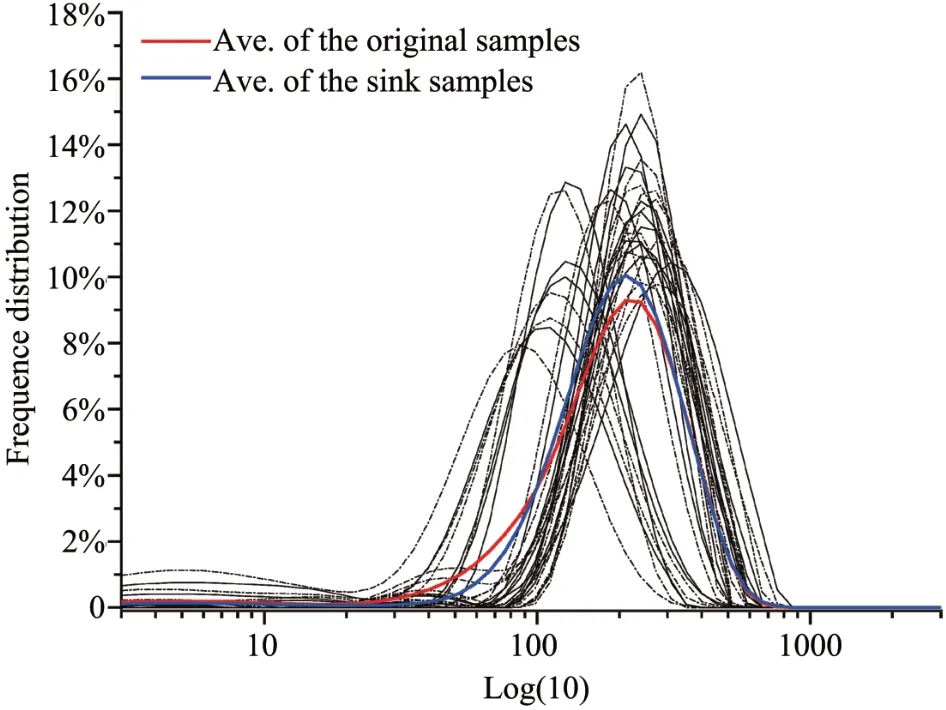
Figure 3 Frequency distribution of original samples and sink sand samples
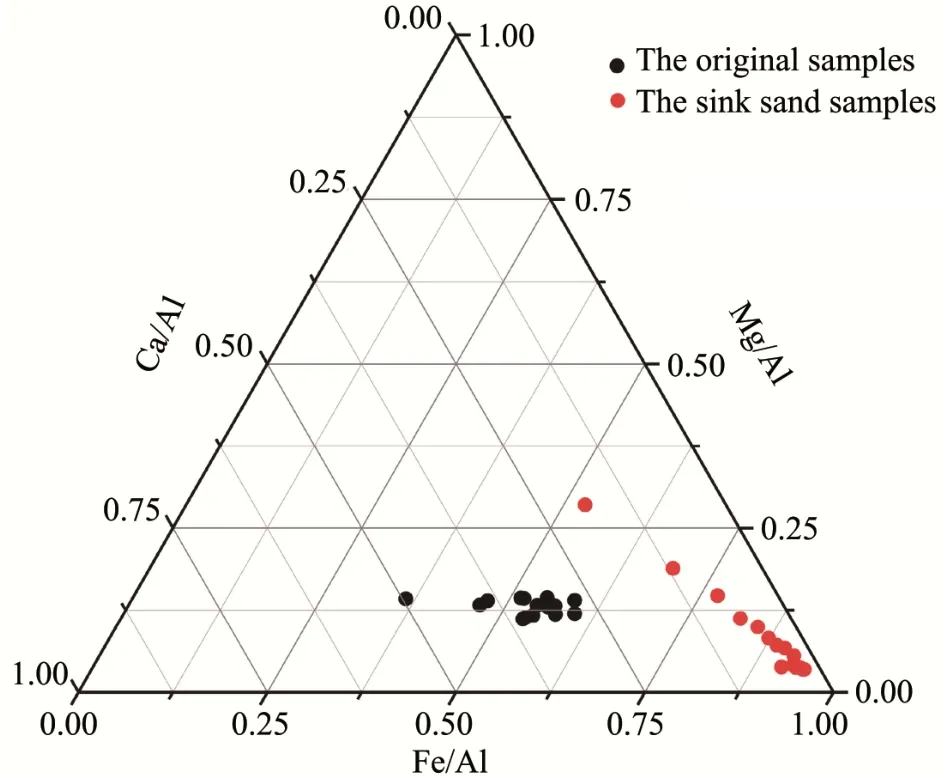
Figure 4 Ternary relationships between Fe/Al,Mg/Al and Ca/Al for original and sink sand samples
3.3 Minor elemental composition of original and transported samples
The two sets of minor elemental content data were tested using the paired samples T test method in SPSS.The results indicate that the two data sets were significantly different at 95% confident level(Table 3,N= 15) except for Ga, Nb and Ba.The average content of Ti,V,Cr,Mn,Cu,Ga,As,Rb,Sr,Y,Zr,La,Ce and Nd were higher in the original than in sink samples, while the average content of P and Ni were lower in the original than in sink samples.This indicates that minor elemental composition of original samples is altered by the winds sorting effects.
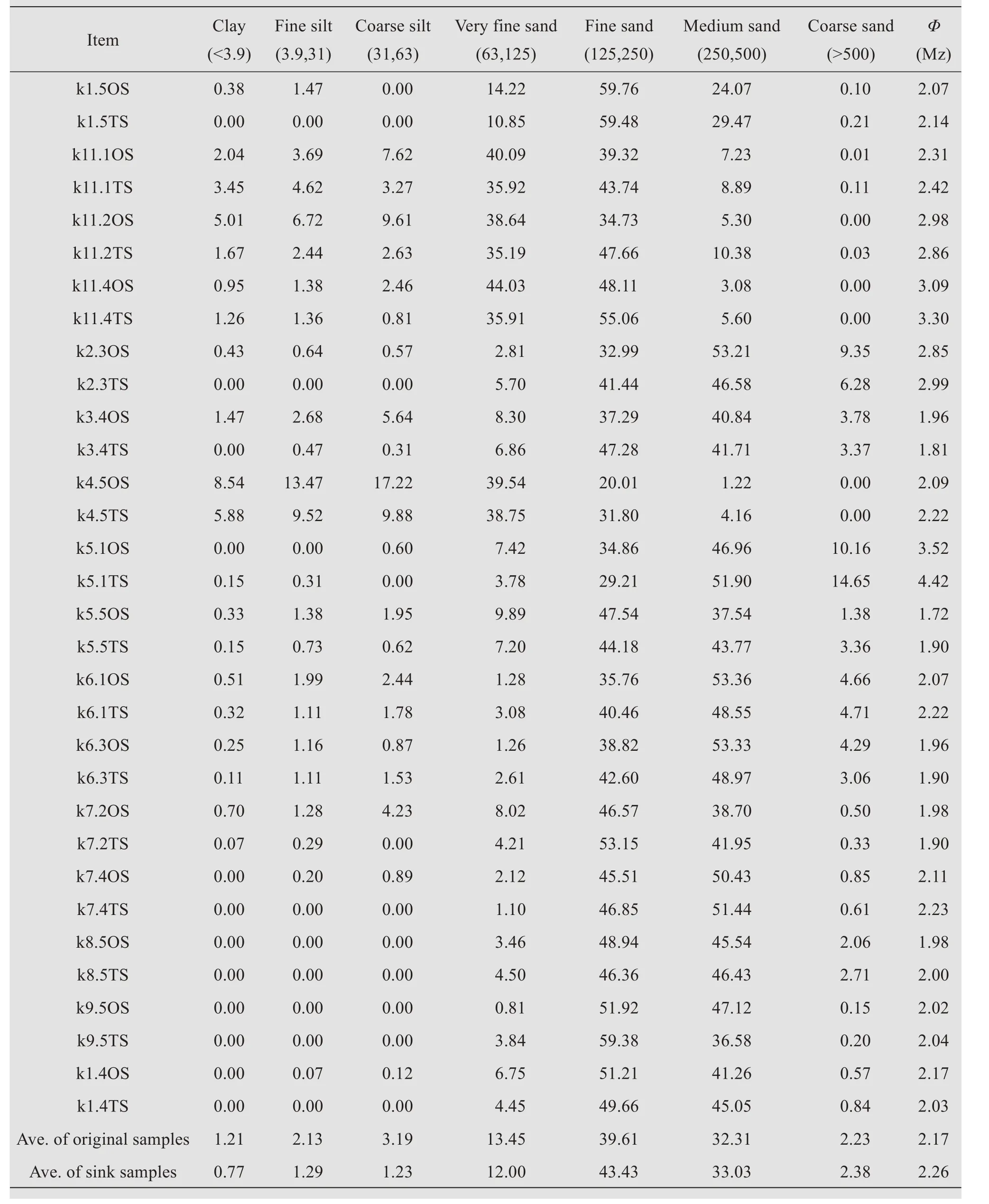
Table 1 The grain size variation of sink and original samples

Table 2 Major elements variation of sink and original samples
3.4 Behavior of major and minor element migration under wind erosion
The sink samples were gently crushed, mixed,and passed through a 63 μm sieve prior to chemical analysis, and particles coarser than 63 μm and finer than 63 μm were separated.The averaged results indicate that content of SiO2and K2O was lower in the <63 μm particles than in the >63 μm particles while average contents of Al2O3, Fe2O3, MgO, CaO,and Na2O was higher in fine particles than in coarse particles(Table 4).Therefore,we expected these elements to have different migration tendencies when the samples were exposed to the wind.SiO2and K2O tended to stay in the source regions while Al2O3,Fe2O3, MgO, CaO, and Na2O diminished with the fine particles and participated in the material and energy cycles.
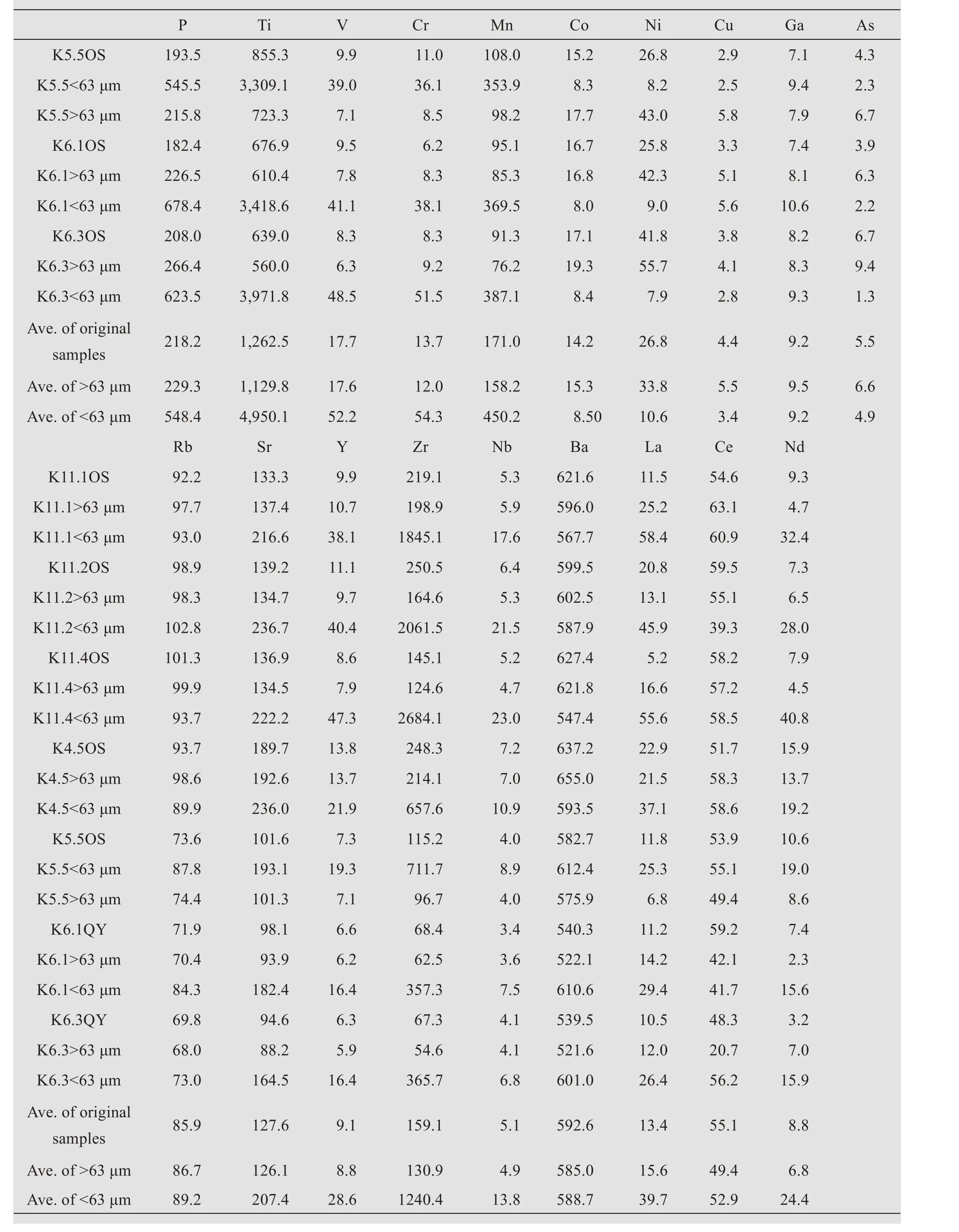
to be continued:
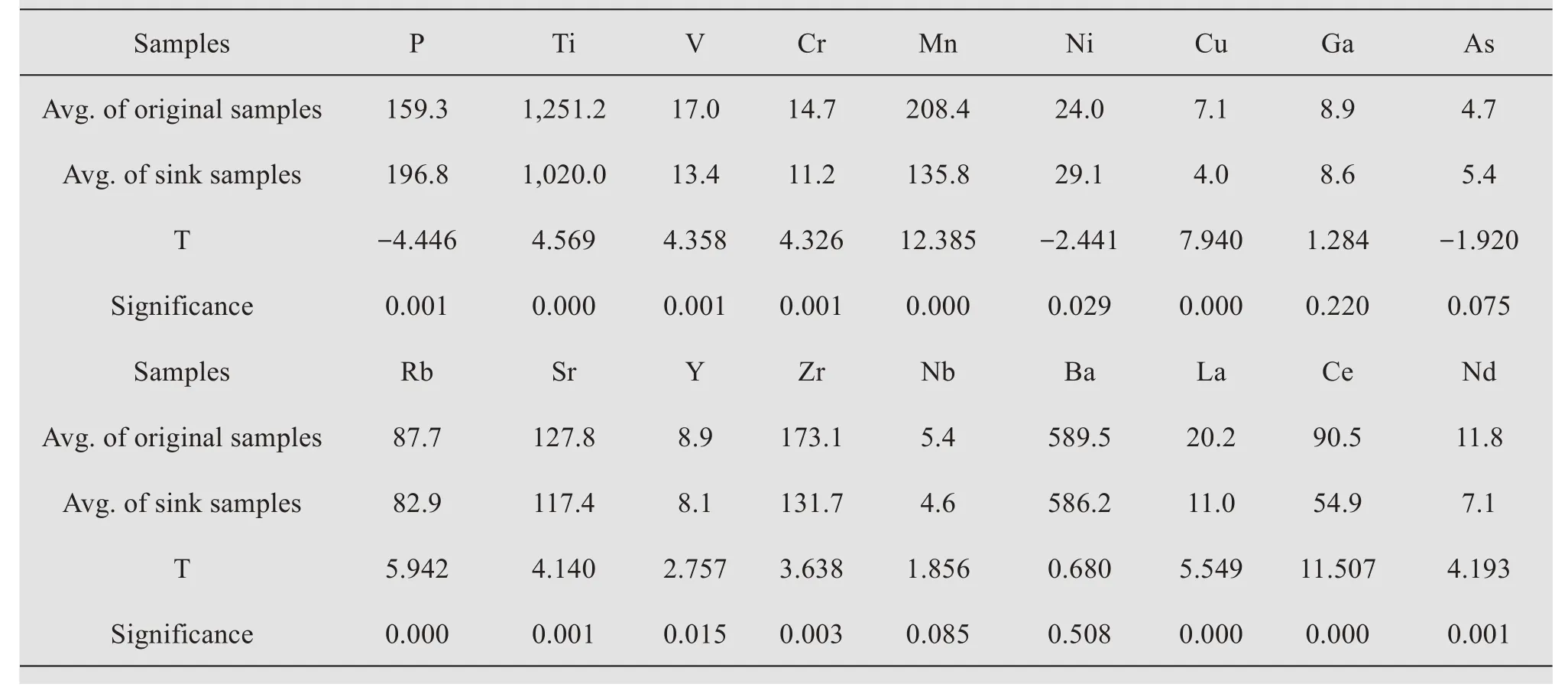
Table 3 The minor elements variation of sink and original samples
The averaged minor elemental composition results indicated that P, Ti, V, Cr, Mn, Rb, Sr, Y, Zr,Nb, Ba, La, Ce, and Nd mainly existed in the coarse component (>63 μm) and that Co, Ni, Cu, Ga, and As mainly existed in the fine particles (<63 μm)(Table 5).
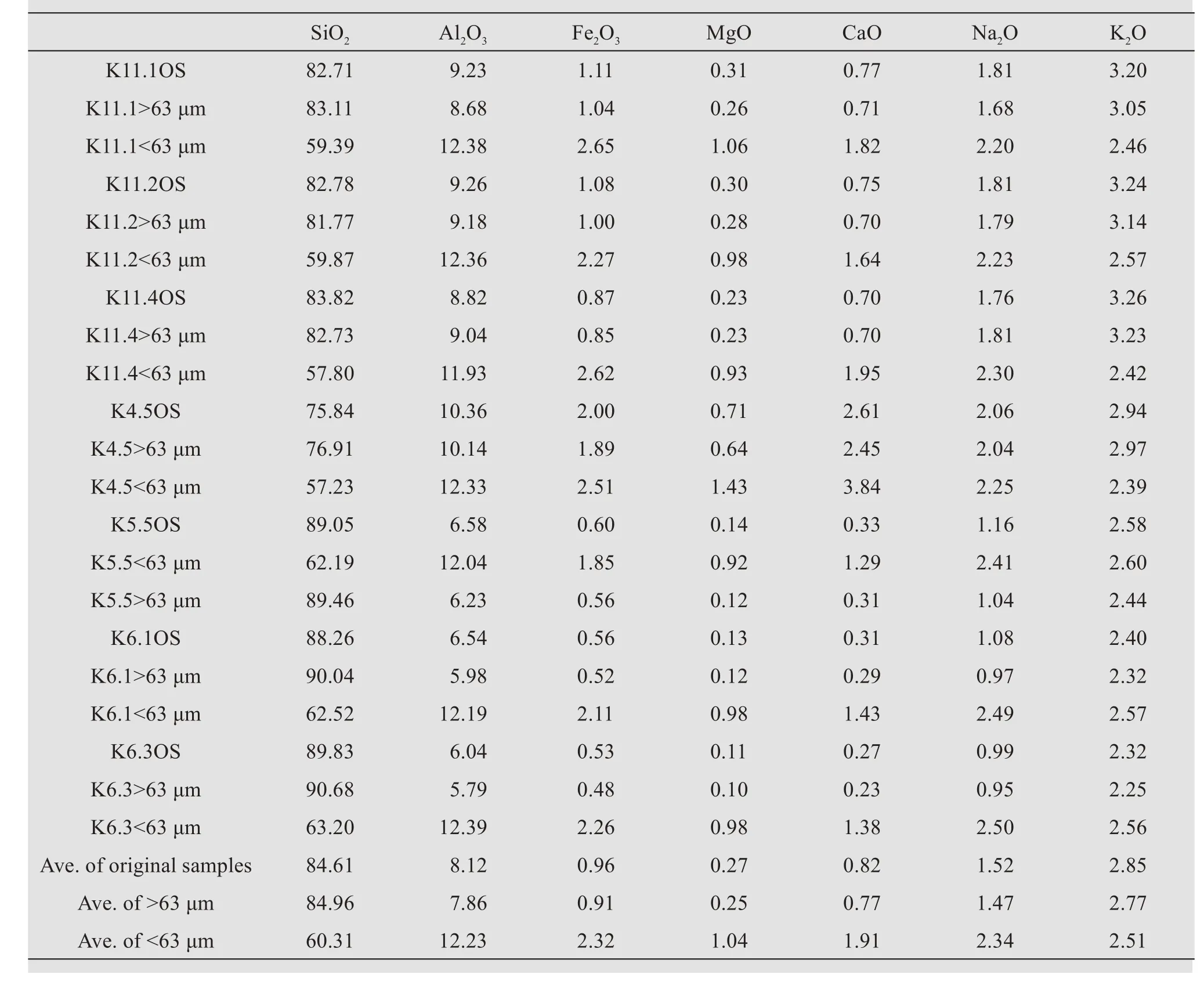
Table 4 The major elements variation of sink and original samples

Table 5 The minor elements of different parts of sink samples
4 Discussions
We collected sink sand at the end of a wind tunnel,and assessed the aeolian effect on its grain size sorting and geochemistry composition.In this work,grain sizes of collected samples show great variation because of the granularity difference of surface samples.Surface renewal played an important role during the wind erosion process(Zhanget al.,2013)and three cases can be classified.First,the original samples had very fine grain sizes and can thus be moved at very low wind velocities.Some fine particles in the sink samples might have been present as emitted dust that fell into the sample trays.Second, the original samples had very coarse grain sizes without fine particles, and sand particles rubbed together, thus generating fine particles (Bullardet al.,2004).Third,the original samples had a moderate grain size, fine particles were emitted, and only the saltating portion was collected.This mechanism had been reported by numerous studies, for example, Dong and Qian(2007)indicated that grain size was the crucial factor at a given wind velocity when assessing creep proportion.The desertification process is closely related to the sedimentological characteristic(Zhouet al.,2021).
The geochemistry characteristics of fine-grained components (<63 μm) of Horqin sandy land, as a potential dust source area,show a considerable difference from those of other regions (Table 6).Horqin sandy land has the highest content of Zr,Ba,SiO2,Al2O3,and K2O among all dust source areas in China.In comparison with the average composition of the upper continental crust, surface samples are rich in Y, Zr, Nb, Ba,La, and Nd and poor in the rest of the elements.The ternary relationship between Fe/Al, Mg/Al, and Ca/Al was used to identify dust sources,which has been used to identify dust sources in the Mojave Desert in southwestern USA(Sweeneyet al., 2013) and also other regions in China (Zhanget al., 2017b).The ternary relationship between Fe/Al, Mg/Al, and Ca/Al shows that three ratios' distribution are different depending on the potential source regions of fine grained components(Figure 5).The scatter distribution of Rb/Sr and Ba/Sr,which had been widely used in research on dust sources, shows that geochemistry characteristics of finegrained components can be classified based on different dust source regions(Figure 6).
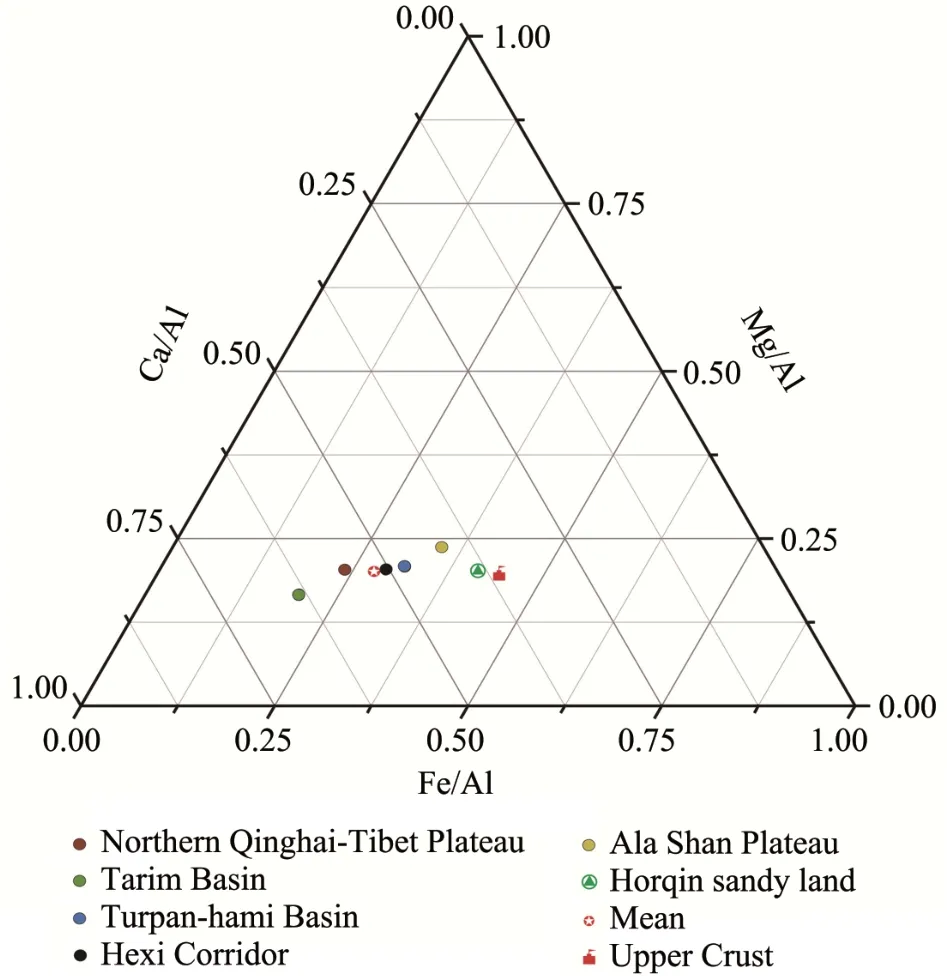
Figure 5 Ternary relationships between Fe/Al,Mg/Al and Ca/Al for different dust source regions of China
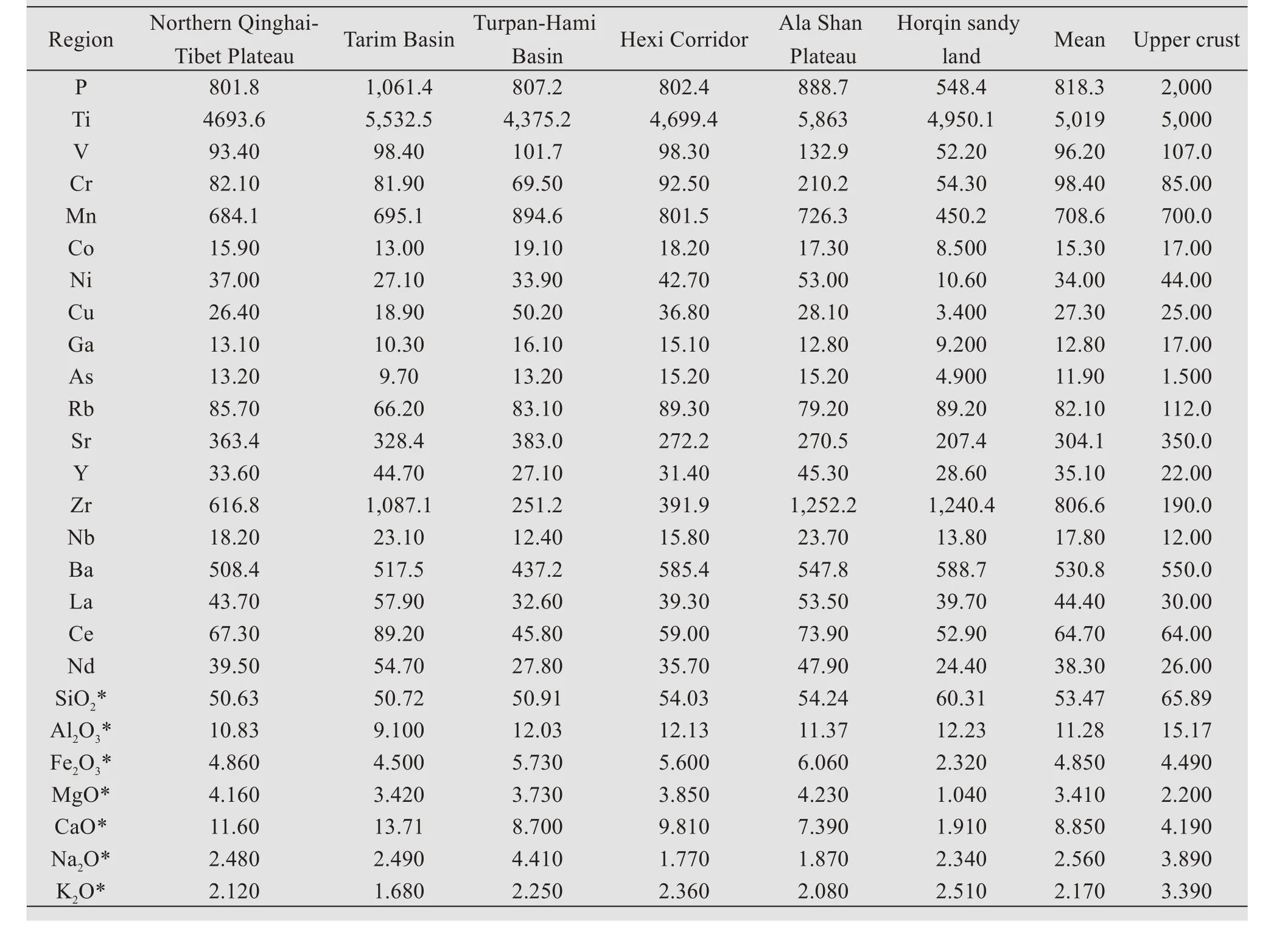
Table 6 The geochemistry characteristics of the fine-grained component from different potential dust source areas of China.Data of other regions were derived from Wang et al.(2018)
According to observed data from the National Metclimate center, annual mean maximum wind velocity and annual mean wind velocity in Horqin sandy land show a significant decrease from 1970 to 2018(Figure 7) while mean maximum wind velocity from 1970 to 2018 at Jarud Banner and Balin Left Banner was 14.75 m/s and 17.51 m/s, respectively, which were higher than the saltation wind velocity(6-8 m/s)in this region (Li and Zhang, 2016).Furthermore, the material composition of the Horqin sandy land is fragile, where surface sand deposits are loose and with poor cohesion,the mean grain size between 125-500 μm and underneath the surface soil consists of quaternary fluvio-lacustrine deposits.Nutrition is lost when fine grains are removed from the coarse sand due to wind functions on the loose surface.The wind starts to change the grain size and geochemistry composition,and wind erosion in this area exerts a prefaced effect on the regional surface material and the desertification process (Wanget al., 2015).Thus, caution should be observed when using surface samples to track material sources(Wanget al.,2017).
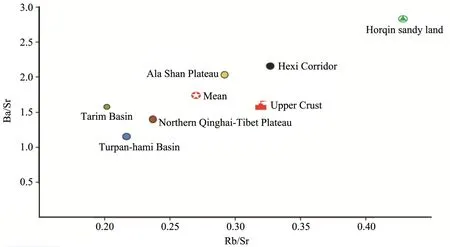
Figure 6 The scatter distribution of Rb/Sr and Ba/Sr for different dust source regions of China
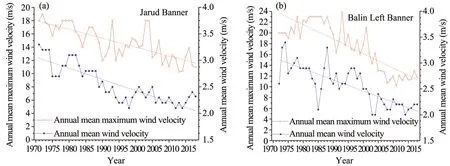
Figure 7 Variation of annual mean maximum wind velocity and the annual mean wind velocity in Jarud Banner and Balin Left Banner from 1970 to 2018
Our results also indicate that the geochemistry characteristic of the fine-grained component is different from those from other dust source regions.Firstly,fine-grained particles in the Horqin sandy land were mostly derived from various local sediments, such as dry ancient lake sediment, the alluvial fan of the Great Xing'an Ling, and lakeshore sediments from the ancient great Songneng Lake (Qinet al., 2010).Secondly, the geomorphologic setting is very complex in this area, except the key sand land area adjourn the Wenniute-Naiman area.Sandy land and the river were alternately distributed, as a result, the formation of surface fine components was controlled by the interaction of wind and water forces.Thirdly, at some local areas, ancient tectonic activities influenced the surface geomorphology evaluation and altered its fine grain sediment emission process.For example, the eastern Asian continent moved to the north by the collision of India plate and the pacific plate,thus causing a lifting of the Qinghai Tibet Plateau and surrounding mountains of the Horqin sand land (Donget al.,1994).Our results indicate that fine-grained components result from local sediment environments, which support the basic material supply for sand movement.Wind erosion exerts a sorting effect on surface sediments (Shenet al., 2018).Thus, wind erosion simulation and geochemistry analysis are important methods in identifying dust source areas in Northern China.
5 Conclusions
This study collected sink sand from the diffusion section of a wind tunnel,were experimental results indicate that grain sizes of collected samples show great variation because of the granularity difference of surface samples.Also, the elemental composition was also different from the original surface samples.The average content of SiO2was lower in original than in sink samples, while the average content of Al2O3,Fe2O3,MgO,CaO,Na2O,and K2O was higher in original than in sink samples.The average content of Ti,V,Cr, Mn, Cu, Ga, As, Rb, Sr, Y, Zr, La, Ce, and Nd were higher in original than in sink samples,while the average content of P and Ni were lower in original than in sink samples.The wind erosion process simulation and geochemistry analysis are the effective way for the dust source identify in northern China.However, at present, the distance effects of the hopper from the samples in the leading edge of the wind erosion had not been fully evaluated.
Acknowledgments:
This research was supported by the National Key R&D Program of China (No.2020YFA0608404) and a grant from the National Nature Science Foundation of China(41101006)and the Project of the Key Laboratory of Desert and Desertification, Chinese Academy of Sciences (KLDD-2019-008).We thank Mr.Hong Li for operating the wind tunnel.
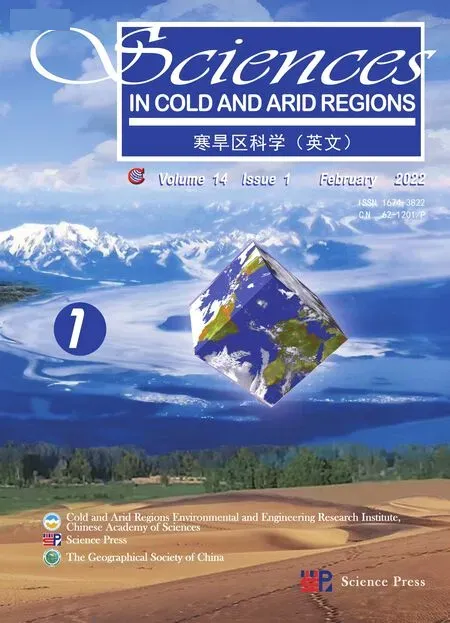 Sciences in Cold and Arid Regions2022年1期
Sciences in Cold and Arid Regions2022年1期
- Sciences in Cold and Arid Regions的其它文章
- Research progress on behaviors and environmental effects of mercury in the cryosphere of the Tibetan Plateau:a critical review
- Numerical simulation of vibrational response characteristics of railway subgrades with insulation boards
- Desertification status mapping in Muttuma Watershed by using Random Forest Model
- Geographic range size patterns across plants and animals of Xinjiang,China
- Spatial and temporal patterns of solar radiation in China from 1957 to 2016
- Guidelines to Authors
